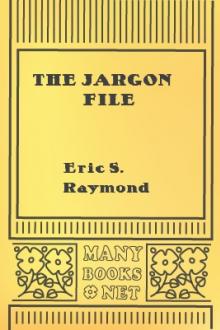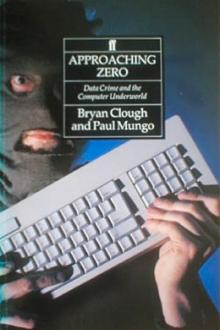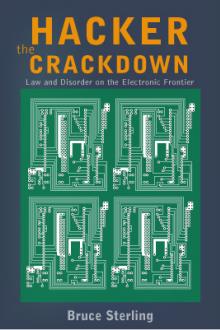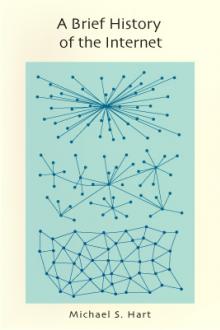Genre Computers. Page - 5

ele-1983, but external conditions caused the `temporary' freeze to become permanent.
The AI Lab culture had been hit hard in the late 1970s by funding cuts and the resulting administrative decision to use vendor-supported hardware and software instead of homebrew whenever possible. At MIT, most AI work had turned to dedicated LISP Machines. At the same time, the commercialization of AI technology lured some of the AI Lab's best and brightest away to startups along the Route 128 strip in Massachusetts and out West in Silicon Valley. The startups built LISP machines for MIT; the central MIT-AI computer became a [45]TWENEX system rather than a host for the AI hackers' beloved [46]ITS.
The Stanford AI Lab had effectively ceased to exist by 1980, although the SAIL computer continued as a Computer Science Department resource until 1991. Stanford became a major [47]TWENEX site, at one point operating more than a dozen TOPS-20 systems; but by the mid-1980s most of the interesting software work was being

neral commitment to a cathedral-building style of development. If the overriding objective was for users to see as few bugs as possible, why then you'd only release a version every six months (or less often), and work like a dog on debugging between releases. The Emacs C core was developed this way. The Lisp library, in effect, was not-because there were active Lisp archives outside the FSF's control, where you could go to find new and development code versions independently of Emacs's release cycle [QR].
The most important of these, the Ohio State Emacs Lisp archive, anticipated the spirit and many of the features of today's big Linux archives. But few of us really thought very hard about what we were doing, or about what the very existence of that archive suggested about problems in the FSF's cathedral-building development model. I made one serious attempt around 1992 to get a lot of the Ohio code formally merged into the official Emacs Lisp library. I ran into political trouble and was largely unsucces

ng of the word "any."
Dick Sunderland Chalk-complexioned MBA who believed that firm managerial bureaucracy was a worth goal, but as president of Sierra On-Line found that hackers didn't think that way.
Gerry Sussman Young MIT hacker branded "loser" because he smoked a pipe and "munged" his programs; later became "winner" by algorithmic magic.
Margot Tommervik With her husband Al, long-haired Margot parlayed her game show winnings into a magazine that deified the Apple Computer.
Tom Swift Terminal Lee Felsenstein's legendary, never-to-be-built computer terminal which would give the user ultimate leave to get his hands on the world.
TX-0 Filled a small room, but in the late fifties this $3 million machine was the world's first personal computer--for the community of MIT hackers that formed around it.
Jim Warren Portly purveyor of "techno-gossip" at Homebrew, he was first editor of hippie-styled Dr. Dobbs Journal, later started the lucrative Computer Faire.
Randy

effectively stopped growing and changing. Originally, this was due to a desire to freeze the file temporarily to facilitate the production of Steele-1983, but external conditions caused the `temporary' freeze to become permanent.
The AI Lab culture had been hit hard in the late 1970s by funding cuts and the resulting administrative decision to use vendor-supported hardware and software instead of homebrew whenever possible. At MIT, most AI work had turned to dedicated LISP Machines. At the same time, the commercialization of AI technology lured some of the AI Lab's best and brightest away to startups along the Route 128 strip in Massachusetts and out West in Silicon Valley. The startups built LISP machines for MIT; the central MIT-AI computer became a [45]TWENEX system rather than a host for the AI hackers' beloved [46]ITS.
The Stanford AI Lab had effectively ceased to exist by 1980, although the SAIL computer continued as a Computer Science Department resource until 1991. Stanford became a majo

not these items, but rather the tools used create such items. After all, wire, metal tubes, planks, and bricks don't magically appear; rather they are created and formed as entities unto themselves. On a similar note, graphics don't magically appear on the screen -- typically they consist of lower-level graphics primatives (lines, rectangles, and individual pixels, for example).
So the graphics library, then, can be thought of as the low-level graphics primatives used to build more complex objects (spheres, boxes, complex polygons, etc.). Those complex objects are then used to build even more complicated shapes and figures.
The graphics library installed was the freeware implementation of OpenGL called Mesa.
2.2. The Graphics Modeller
Since the graphics renderer is, ideally, completely hidden from the end-user, we'll deal with that last (besides which, modelling is the next logical step in keeping with my house-building analogy). However, when it comes to the actual i

hatever. This is where screen capturing and logging come in.
When you tell your communications software to capture a screen, it opens a file in your computer (usually in the same directory or folder used by the software) and "dumps" an image of whatever happens to be on your screen at the time.
Logging works a bit differently. When you issue a logging command, you tell the software to open a file (again, usually in the same directory or folder as used by the software) and then give it a name. Then, until you turn off the logging command, everything that scrolls on your screen is copied into that file, sort of like recording on videotape. This is useful for capturing long documents that scroll for several pages -- using screen capture, you would have to repeat the same command for each new screen.
Terminal emulation is a way for your computer to mimic, or emulate, the way other computers put information on the screen and accept commands from a keyboard. In general, most systems on the Net

calls. The whole transaction had taken less than ten minutes.
The next day, after his friend in Kentucky had picked up the $687, Fry Guy carried out a second successful transaction, this time worth $432. He would perform the trick again and again that summer, as often as he needed to buy more computer equipment and chemicals. He didn't steal huge amounts of money-- indeed, the sums he took were almost insignificant, just enough for his own needs. But Fry Guy is only one of many, just one of a legion of adolescent computer wizards worldwide, whose ability to crash through high-tech security systems, to circumvent access controls, and to penetrate files holding sensitive information, is endangering our computer-dependent societies. These technology-obsessed electronic renegades form a distinct subculture. Some steal--though most don't; some look for information; some just like to play with computer systems. Together they probably represent the future of our computer-dependent society. Welcome to the com

adand do that, I am giving you express permission right now. Enjoyyourself.
You can put the book on disks and give the disks away, aslong as you don't take any money for it.
But this book is not public domain. You can't copyrightit in your own name. I own the copyright. Attempts to piratethis book and make money from selling it may involve you in aserious litigative snarl. Believe me, for the pittance you mightwring out of such an action, it's really not worth it. This bookdon't "belong" to you. In an odd but very genuine way, I feel itdoesn't "belong" to me, either. It's a book about the people ofcyberspace, and distributing it in this way is the best way Iknow to actually make this information available, freely andeasily, to all the people of cyberspace--including people faroutside the borders of the United States, who otherwise may neverhave a chance to see any edition of the book, and who may perhapslearn something useful from this strange story of distant,obscure, but por

of this kind, of overtones and undertones that illuminate the hackish psyche.
But there is more. Hackers, as a rule, love wordplay and are very conscious and inventive in their use of language. These traits seem to be common in young children, but the conformity-enforcing machine we are pleased to call an educational system bludgeons them out of most of us before adolescence. Thus, linguistic invention in most subcultures of the modern West is a halting and largely unconscious process. Hackers, by contrast, regard slang formation and use as a game to be played for conscious pleasure. Their inventions thus display an almost unique combination of the neotenous enjoyment of language-play with the discrimination of educated and powerful intelligence. Further, the electronic media which knit them together are fluid, `hot' connections, well adapted to both the dissemination of new slang and the ruthless culling of weak and superannuated specimens. The results of this process give us perhaps a uniquely inten

similar. I want yours. I want theone you have, even if I already have one or many.
3. Lust: I have to have it.
4. Anger: I will hurt you to insure that I have it, andand to insure that you do not have one.
5. Envy: I hate that you have one.
6. Greed: There is no end to how much I want, or to howlittle I want you to have in comparison.
7. Sloth: I am opposed to you moving up the ladder: itmeans that I will have to move up the ladder, to keepmy position of lordship over you. If I have twice asmuch as you do, and you gain a rung, that means I canonly regain my previous lordship by moving up two; itis far easier to knock you back a rung, or to preventyou from climbing at all.
Destruction is easier than construction.
This becomes even more obvious for the person who hasa goal of being 10 or 100 times further up the ladderof success. . .given the old, and hopefully obsolete,or soon to be obsolete, definitions of